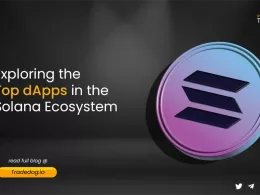Quick Links
Ethereum, the world’s second most popular blockchain, is on the brink of a significant transformation with the introduction of Danksharding and Proto-Danksharding. These technologies are pivotal in upgrading Ethereum’s consensus layer, enhancing scalability, and optimizing layer-2 communication with the main chain. This blog delves into the intricacies of these technologies and their potential to revolutionize Ethereum.
Understanding Sharding
To appreciate the innovations of Danksharding and Proto-Danksharding, it’s essential first to understand the concept of sharding. Sharding is a scalability solution that involves dividing the blockchain into smaller, manageable pieces, or “shards,” each capable of independently processing transactions and smart contracts. This parallel processing capability significantly increases the network’s capacity and speed.
Enter Danksharding
Danksharding is an advanced form of sharding proposed for Ethereum. It’s named after Dankrad Feist, an Ethereum researcher who has been instrumental in its development. Danksharding aims to enhance the efficiency and scalability of the Ethereum network by introducing a novel approach to data availability and shard management.
One of the critical features of Danksharding is the introduction of “data availability sampling,” which allows nodes to verify the availability of shared data without needing to download the entire shard. This significantly reduces the bandwidth requirements for validators and makes the network more accessible to participants with limited resources.
Furthermore, Danksharding proposes using a single “blob” of data for each block, which contains the combined data of all shards. This blob is then distributed across the network, ensuring that data from all shards is readily available and can be efficiently processed.
Proto-Danksharding: A Stepping Stone
Proto-Danksharding is an interim solution that paves the way for the full implementation of Danksharding. It introduces some of the core concepts and mechanisms of Danksharding but in a more simplified and manageable form. Proto-Danksharding aims to gradually acclimate the Ethereum network and its participants to the changes that full Danksharding will bring.
One of the main components of Proto-Danksharding is the introduction of “blob transactions,” which are essentially large data transactions that mimic the data blobs in Danksharding. These blob transactions allow the network to start handling larger volumes of data in preparation for the full Danksharding implementation.
A key aspect of Danksharding and Proto-Danksharding is the introduction of data blobs and the KZG polynomial commitment scheme. Data blobs, large data units attached to transaction blocks, are designed to optimize rollup solutions by reducing storage overhead and transaction costs. The KZG scheme compresses data blobs into small cryptographic commitments, enhancing the efficiency of data validation.
The Road Ahead
The Ethereum roadmap, including the implementation of Danksharding and Proto-Danksharding, is flexible and subject to change based on new technological advancements and information. The next six months are expected to see significant updates, such as staking withdrawals, with some enhancements like quantum resistance potentially taking five to ten years to implement.
The introduction of Danksharding and Proto-Danksharding represents a pivotal moment in Ethereum’s journey towards greater scalability, efficiency, and utility. As these technologies are gradually implemented, the Ethereum ecosystem is poised for transformative growth, promising a future where decentralized applications and smart contracts can thrive on a more robust and scalable platform.









